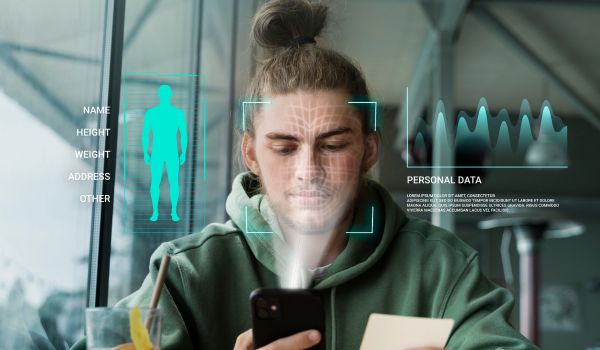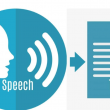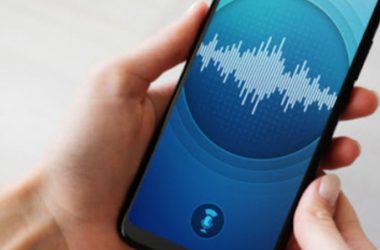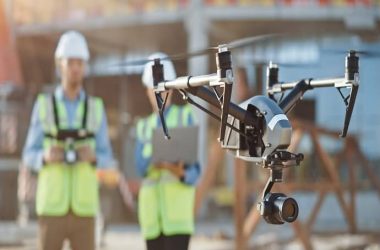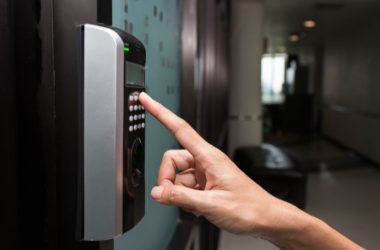The facial recognition market is expected to reach $9.06 billion by 2024. This technology has made identity verification easier, as many of us now easily unlock our smartphones or computers using Face ID.
It provides a secure system and reduces the risk of spoof attacks and other fraudulent activities. Many companies now rely on facial recognition technology in their security systems, as it simplifies the verification process and enhances overall safety measures. It manages employee access as well and identifies unauthorized individuals effectively.
However, its services are not limited to security purposes. We have many benefits of facial recognition in several other domains, from criminal investigations to customer engagement. In this blog, we’ll focus on how facial recognition works and where it is applicable.
What Is Facial Recognition?
Imagine strolling toward a building, and its smart entry system scans your face, recognizes you, and unlocks the door. Similarly, you glance at your phone, which instantly unlocks, recognizing your facial features. It is all possible now by using facial recognition solutions.
It works with AI and machine learning to make an analysis of distinctive facial features in a digital image and compare them with a database of known individuals. When the system detects a match with a high level of certainty, it means the person in the image is the exact match of the person’s facial recognition scans.
In this exact way, Folio3 AI uses an advanced algorithm in facial recognition technology services. We have pre-trained face detection and demographic models to verify faces.
It employs facial features like nose shape, cheekbone contours, and eye distance to determine if faces belong to the same individual. Some of the other tasks it performs are.
- Facial expression recognition: Analyzing emotions like happiness, anger, or sadness.
- Age and gender estimation: Inferring demographic information based on facial features.
- Real-time processing: Performing recognition and analysis on video feeds for surveillance or tracking applications.
How Facial Recognition Works?
Businesses embrace facial recognition trends to speed up check-out, reinforce security, and enhance customer interaction. Unlike fingerprints, it works through the camera and quickly scans the identity of individuals from a distance.
Our facial recognition services work the same way. It effortlessly matches human faces across images and videos, making it an ideal solution for various industries. There are three key points to consider here:
1. Capturing the Face
First, a high-resolution camera captures a digital image of the face, whether from a photo, video frame, or live feed. It ensures the image quality is sufficient for AI algorithms to analyze. The captured image considers various aspects, including.
- Geometry – Facial measurements like the distance between the eyes, depth of eye sockets, and jawline shape are required.
- Texture – Skin characteristics such as wrinkles, freckles, and blemishes.
- Facial Landmarks – Dots are made in images that describe features like the position of the eyes, nose, and mouth.
2. Facial Analysis
After capturing the image, facial recognition works with the advanced algorithm used to examine the structure of the face. It involves analyzing facial landmarks and converting them into mathematical representations.
Then, the software evaluates the data points comprising the distinctive facial signature of an individual.
3. Data Comparison
When the facial landmarks are gathered, the system compares this facial signature against a database of known faces. It can be a database of employees, customers, or suspects. Then, it looks for the face that matches the exact pattern it recognizes.
Common Face Recognition Problems And How to Solve Them
The AI algorithm continuously changes, and therefore, it often hinders the system. No matter how quick and efficient a technology is, there are always chances of errors.
Here are some common challenges faced with facial recognition and their solutions:
Problem 1: Accuracy and Bias
Facial recognition works in algorithms that can be biased based on the training data they are fed, leading to inaccurate identifications for certain groups, particularly people of color and women.
Solution:
Developers must actively make quick changes to training data sets on every update. It will help to implement and mitigate bias. Hence, one of the benefits of face recognition is that no individual would be treated differently.
Problem 2: Privacy Concerns
Facial recognition works for various purposes, such as finding missing people. It may have personal information to locate the missing individual’s last availability. This use of facial recognition raises concerns about the privacy and security of data.
Solution:
Transparency with precise regulation must be exercised when using the personal information of individuals without their knowing because user consent is essential.
Problem 3: Security Risks
Facial recognition is an open system, so it is vulnerable to hacking, manipulation, or deep fakes, which can lead to theft and security breaches.
Solution:
Encryption and a robust system are essential to maintaining data privacy when recognizing facial features.
Problem 4: Ethical Considerations
The use of facial recognition can raise ethical concerns about racial profiling, social control, and potential discrimination.
Solution:
Open discussions and public engagement are essential to define acceptable technology uses. Prioritizing human rights and ethical principles at every stage of development and implementation is critical.
Problem 5: Algorithmic Transparency
The “black box” nature of some facial recognition algorithms makes it difficult to understand how they work and identify potential biases.
Solution:
Ensuring transparency and explicability of algorithms is essential. One of the primary benefits of face recognition algorithms is their ability to promote transparency and trust.
Independent audits play a crucial role in this process, as they help build confidence and ensure the responsible development of facial recognition technology.
Applications of Facial Recognition Technology
From the captivating scenes of futuristic movies to the everyday convenience of unlocking smartphones, facial recognition technology (FRT) has become an integral part of every business where our company services of this technology are famous.
Foilio3 AI has provided solutions for facial recognition worldwide, empowering businesses to increase their conversion rates and enhance customer satisfaction.
1. Retail
Facial recognition technology revolutionizes the retail experience by offering personalized service to customers. As shoppers return to stores, the system identifies them, allowing staff to greet them by name and tailor recommendations based on past purchases and preferences.
2. Finance
In the finance sector, facial recognition technology enhances security and convenience for users. Replacing traditional passwords and PINs offers a more secure authentication method for accessing mobile banking apps and ATMs.
3. Entertainment and Events
It drives efficiency and convenience at entertainment venues and events. Beyond enhancing security through staff identification, it enables contactless payments and VIP experiences, elevating the overall guest experience.
4. Healthcare
Facial recognition technology plays a significant role in healthcare, particularly in patient identification and record-keeping. Beyond streamlining registration processes, it aids in diagnosing genetic conditions and improving overall operational efficiency.
Facial Recognition Made Easy With Folio3 AI
Foilio3 AI enhances the integration of facial recognition technology, ensuring robust authentication and streamlined business operations. Our company specializes in offering state-of-the-art image similarity solutions to businesses globally.
We cater to diverse industries, including e-commerce, fashion, healthcare, real estate, and manufacturing. Our team of experts uses the most advanced tools and platforms available. And make sure we deliver reliable and consistent image recognition services.
Our primary objective is to assist your businesses in boosting conversion rates and achieving higher levels of customer satisfaction. Here’s what you get with Folio3 AI face recognition technology:
1. Enhanced Productivity
Tasks that typically require human moderation can be completed 20 times faster. It is all possible with Folio3 AI’s screen video and image authentication. It gives ease in workflow operations, which leads to heightened productivity and efficiency within your business.
2. Easy and Flexible Deployment
We have multiple deployment options, whether on the cloud or on-premise, eliminating the need for expensive infrastructure engineers. This flexibility ensures businesses can easily integrate our services into their existing systems with minimal hassle.
3. Faster Checkouts
Folio3 AI facial recognition technology services minimize the reliance on physical ID documents or passwords during checkout processes across different settings. It leads to shorter checkout times, reducing lengthy queues and wait times and ultimately enhancing customer satisfaction.
4. Hassle-Free Access to Pre-Trained Models
Jumpstart your projects easily using Folio3 AI’s pre-built models tailored to meet various image recognition needs. These ready-to-use models ensure a quick and efficient start to your projects, allowing you to focus on achieving your business objectives without the complexity of training models from scratch.
Future Trends in Facial Recognition Technology
The worldwide multimodal biometrics market is projected to achieve a value of $55.8 billion by 2027, with a compound annual growth rate of 22.7%.
Facial recognition API technology is expected to play a significant role in this growth. Here are some emerging trends in facial recognition technology that will shape its future.
1. Advancements in Deep Learning
Continuous refinement of deep learning techniques, coupled with diverse training datasets, will significantly improve the accuracy and robustness of facial recognition systems.
2. Multimodal Recognition
Fusing facial recognition with other biometric modalities, such as iris scans or voice recognition, will lead to more reliable and secure authentication methods.
3. Real-Time Processing
Advancements in algorithms and hardware will enable real-time facial recognition processing with minimal latency. This capability is crucial for live surveillance and augmented reality applications, enhancing situational awareness and responsiveness.
4. Strengthened Privacy Protocols
Future developments will prioritize implementing robust privacy measures, including decentralized storage of facial data and advanced encryption techniques, to safeguard individual privacy rights and mitigate data breaches.
5. Regulatory Frameworks and Ethical Guidelines
Facial recognition work has become more widespread, and there will likely be a growing demand for stricter regulatory frameworks and ethical guidelines. These measures aim to ensure responsible and ethical deployment of facial recognition systems, addressing data privacy, bias, and misuse concerns.
Conclusion
We have discussed the benefits of facial recognition technology for greater security and efficiency and learned how facial recognition works. The technology is being adopted in various industries, and its applications continue to expand.
With more advancement, this will become a valuable tool in reshaping the business future. Its proven reliability, evidenced by impressive accuracy rates in studies and practical applications, underscores its importance.
With continued innovation, it stands poised to revolutionize various industries, heralding a future where safety and productivity converge seamlessly.
Frequently Asked Questions (FAQs)
Q1: How Accurate Is Facial Recognition Technology?
Answer: The results of this technology are 80% to over 99% accurate, according to the NIST. It uses an advanced recognition AI algorithm. But sometimes, it struggles depending on lighting conditions and image quality.
Q2: Can Facial Recognition Systems Differentiate Between Identical Twins?
Answer: It faces challenges distinguishing between identical twins due to their strikingly similar facial features, which increases the risk of misidentifications. However, some systems have incorporated iris scanning as an additional feature to improve accuracy.
Q3: How Do Facial Recognition Systems Handle Changes in Appearance, Such as Aging or Hairstyles?
Answer: It handles changes in appearance, such as aging or hairstyles, by using an advanced algorithm that can adapt to variations in facial features over time. Facial recognition can recognize individuals even with changes in appearance.
Q4: Are There Privacy Concerns Associated With Facial Recognition Technology?
Answer: Facial recognition systems use advanced algorithms to map and analyze unique facial features rather than relying on overall appearance, which allows them to still accurately identify individuals even with changes in appearance, such as aging or different hairstyles.
Q5: Can Facial Recognition Technology Be Used for Tracking Individuals Without Their Consent?
Answer: Yes, facial recognition technology can be used to track individuals without consent, which has raised concerns about privacy and the potential to abuse this technology. Regulations and ethical guidelines are being developed to address these issues and protect individual rights.

Dawood is a digital marketing pro and AI/ML enthusiast. His blogs on Folio3 AI are a blend of marketing and tech brilliance. Dawood’s knack for making AI engaging for users sets his content apart, offering a unique and insightful take on the dynamic intersection of marketing and cutting-edge technology.




